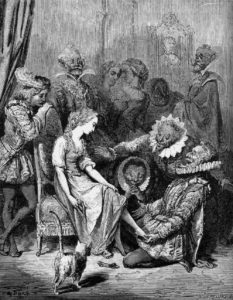Philosophical Foundation of Science
When quantum theory and the theory of general relativity shook the foundation of physics at the dawn of the 20th century, many physicists, such as Erwin Schrödinger and Werner Heisenberg, explored and revisited ancient Greek philosophy. For they suspected there might be something wrong with the philosophical foundation of classical physics. They attempted to retrace the steps in the labyrinth and find out where the wrong turn was made, so to speak, in the hope of discovering neglected wisdom and also correcting inveterate errors (i.e., preconceived ideas and unwarranted assumptions).
I think that modern physics has definitely decided in favor of Plato [against the materialism of Democritus]. In fact the smallest units of matter are not physical objects in the ordinary sense; they are forms, ideas which can be expressed unambiguously only in mathematical language.
–Werner Heisenberg
Scientists work within a philosophical framework. A scientific theory is, among other things, an interpretation of empirical data. When multiple theories describe or explain the data equally well, which one the scientist chooses depends on his/her philosophy. Empirical evidence drives the advance of science by eliminating bad theories. It forces scientists to admit their own errors and sometimes take on a completely different perspective and philosophy. This leads to a paradigm shift.
Cinderella and the Scientific Method

To my mind, the fairytale of Cinderella is a good metaphor of the scientific method. For both presuppose and demand a correspondence.
To find the real Cinderella with whom he fell in love, the Prince takes the glass slipper that she left behind and visits all the young maidens in the country, matching the slipper to their tender feet, until he finds her. So the scientist in love of truth constantly tests their theories against observations and experiments, until they can find the theory that explains all phenomena. Our observation of nature, being extremely limited and imperfect, is not the whole truth, but rather a footprint. It is a means for us to identify or reconstruct the original, just as the glass slipper is a means to find Cinderella.
The Platonist scientist — I believe Einstein is one — is careful to avoid two mistakes. On the one hand, he pities the materialists, who believe there is nothing more to Cinderella than just her foot; On the other hand, he shuns the sophists who indulge in fantasies about airy maidens which they can never substantiate.
Morality and Science
Speaking of fantasies, there is a proposition among some materialists to establish morality through science. Schrödinger speaks of the difficulty, if not impossibility, of the materialist approach to ethics. Because man (the observer) has removed himself from his picture of the world (the observed), the scientific method “consists of itself no ethical values, no aesthetical values, not a word about our own ultimate scope or destination”. Conversely, some have argued that everything in nature is natural and therefore moral. Aristotle refuted this argument and writes that only what nature intends is natural. Therefore, although both disease and health occur in nature, only health is “natural”. The problem is, science knows nothing about intent, it only deals with facts.
In other words, the glass slipper may help the Prince find Cinderella, but it does not and cannot tell whether their union is a good one nor whether they will live happily ever after.

Hello, great article! I wonder if you could provide a source for the Heisenberg quote.
The quote is from Natural Law and the Structure of Matter, an address Heisenberg “delivered on the Hill of Pnyx, Athens the 3rd June 1964.” Translation of Das Naturgesetz und die Struktur der Materie..
Heisenberg expressed the same view in Physics and Philosophy